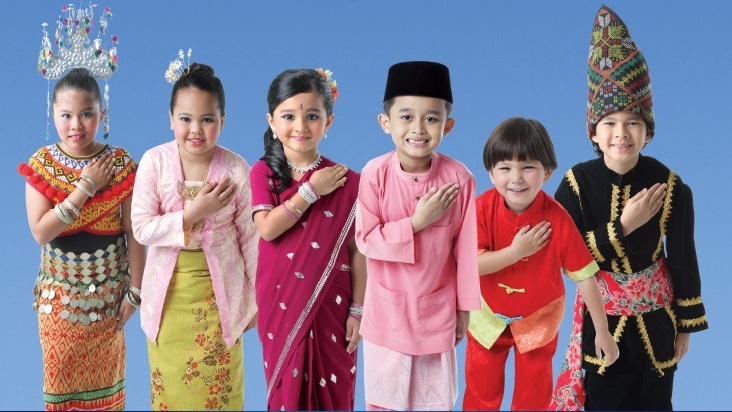
One of the most culturally diverse countries in the world, Malaysia has come a long way from its colonial roots. Manveen Maan recounts the nation’s journey, from traditional village life to modern metropolis.
Malaysia is a land that is a true amalgamation of cultures. From the mighty Majapahit Empire and the founding of the Malacca Sultanate to the colonisation by the Dutch, Portuguese and British, the country has proven itself to be a true melting pot of cultures, all while retaining a distinctly Malaysian identity.
Colonial Roots

Much of Peninsula Malaysia was initially ruled by maharajas of the tradebased Srivijaya Empire, which enhanced the area’s vital role in regional trade. Gradually, Islam was introduced by Arab and Indian traders, followed by an introduction to Chinese culture via trade, spawning the unique baba-nyonya culture that still thrives today.
The tiny fishing nation of Portugal was first to flex some colonial muscle, capturing the trading port of Malacca (also spelled “Melaka”) and ruling for over 100 years. Their reign came to an end in 1641 when the Dutch East India Company and its allies chased them away, setting up trading posts across the country. The country’s strategic sea-lane position brought trade and foreign influences, including Hindu and Buddhist cultures, which fundamentally influenced its early history with beliefs that are in evidence today in the Malay language, literature and various customs.
The 1700s saw a boom in immigrants, with the mining of tin and gold attracting an influx of Arab, Indian and Chinese immigrants who soon controlled business. Not surprisingly, by the 1800s, Britain had established colonies and trading ports throughout the peninsula, causing some friction with their Dutch counterparts. This slight animosity led to the signing of the Anglo-Dutch Treaty in 1824, setting boundaries between British Malaya and the Dutch East Indies (present-day Indonesia).
Kuala Lumpur became the capital city of the Federated Malay States in 1896, and profits poured in soon after, particularly in the lead-up to WWII, due to demand for tin and rubber. World War II was a tumultuous time, and although Malaya was spared from incessant, brutal bombing, life was one of hardship and struggle. During the Japanese occupation exports were stripped, and ethnic tensions between Malays, Chinese and Indians were exacerbated. Japan’s so-called sook ching (purification through suffering) campaign led to the death of 80,000 ethnic Chinese in Malaya and Singapore.
Struggle for Independance

Post-WWII, Malaya started sowing the seeds of independence. In 1946, the nationalist United Malays National Organisation (UMNO) group was founded, seeking independence from Britain but promoting a state dominated by ethnic Malays. Influenced by Cold War politics at the time, Malaya’s ethnic Chinese communist guerrillas upheld an insurgency in the country’s dense jungle areas for 12 years. Known as “The Emergency,” the uprising was eventually suppressed by British and Commonwealth forces. 1957 was a momentous year, with the nation finally gaining independence from Britain. Sabah, Sarawak, and Singapore joined the independent bandwagon in 1963, although Singapore was expelled and left to forge their own self-governing country just two years later.
Rise to Modernity

Malaysia is one of the few countries in the world that has been lucky enough to enjoy a stable economy, and ethnic harmony over the years. A tiny blip in this record occurred in 1969 when race riots struck the nation, but Malaysia recovered and soldiered on into the modern era.
The 1980s was a period that saw the Mahathir administration pledge to transform Malaysia from an agricultural based economy, to one that would rival a first world nation. The gears shifted – the country’s economy diversified and grew at rate of eight percent each year, leading to the skyscrapers and modern buildings we know and associate Kuala Lumpur (and other cities) with today.
Truly Asia

A unique blend of cultures, the concept of the Malaysian identity has often been a hotly debated issue. Sometimes altered to suit different political agendas on either side of the spectrum, the battle for “Malaysian-ness” is often amplified in the local media, but the reality of this issue is less dramatic. A walk down a street in Kuala Lumpur sees Malaysians of all backgrounds conversing above the din of bustling coffee-shops, chowing down on delicious grub at roadside stalls, or sipping lattés in trendy cafes that redefine urban chic. At sunset, the streets come alive with everyone from young professionals and families to tourists and adventurers, paying homage to the nightlife KL is famous for.
At the same time, a trip to the outskirts of the country sees a quieter, more relaxed Malaysia surfacing, with padi fields, wooden kampung houses and children playing in their front yards, soaking up the laidback vibe of village life. Old Malay men sit outside Hindu temples, tucking into homemade grub, as Indian women sweep the front area of a mosque, all while jabbering away in a heady mix of Malay, Chinese, and Indian dialects. This cultural melting pot of races, cultures, and backgrounds defines the very essence of Malaysia – proudly diverse and fiercely patriotic to the land where their
forefathers first set down roots.
Homepage highlight photo credit: algenta 101, Flickr
Source: The Expat November 2013
What are your thoughts on this article? Let us know by commenting below.No registration needed.
Read more:
"ExpatGo welcomes and encourages comments, input, and divergent opinions. However, we kindly request that you use suitable language in your comments, and refrain from any sort of personal attack, hate speech, or disparaging rhetoric. Comments not in line with this are subject to removal from the site. "




















